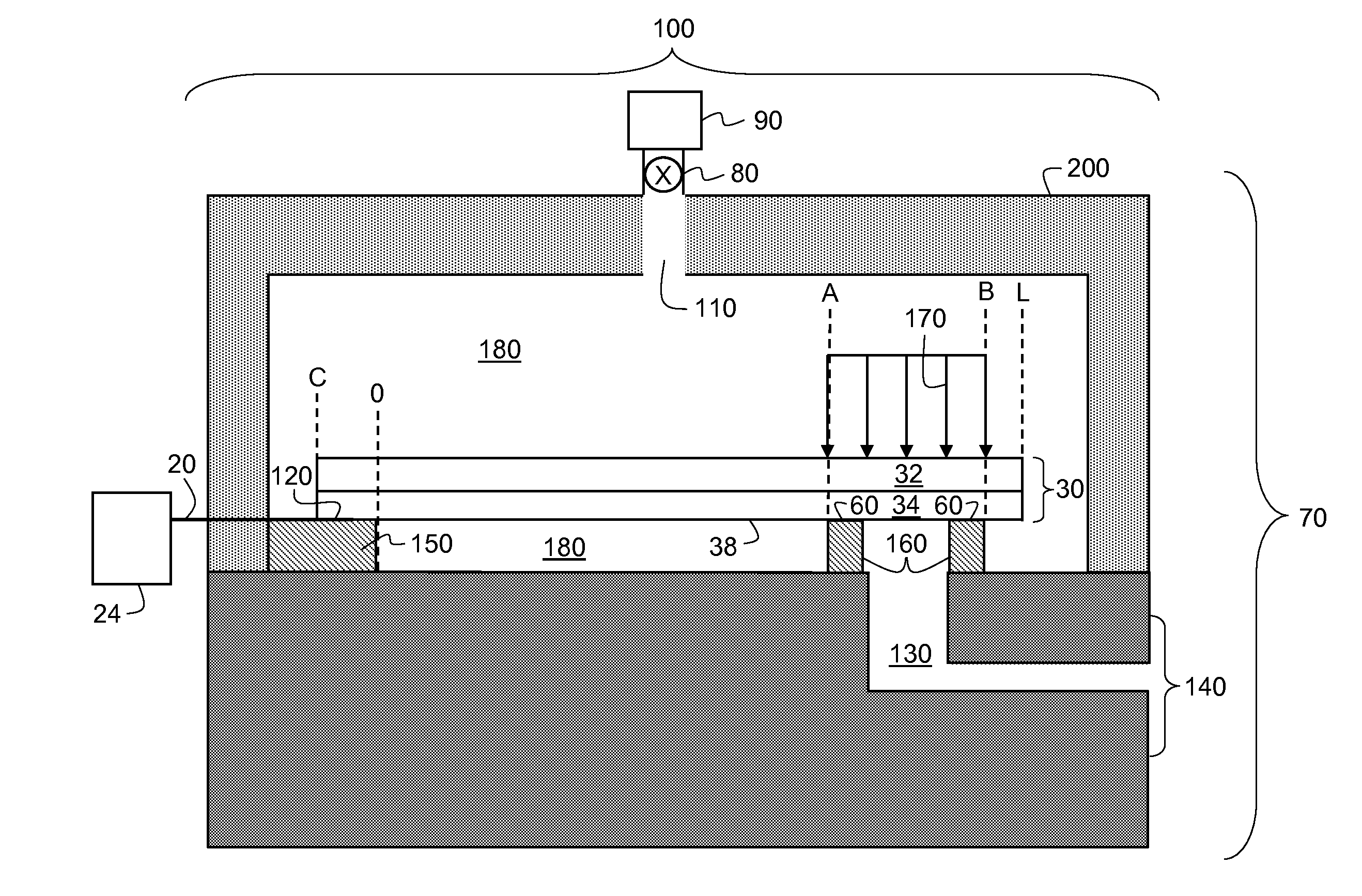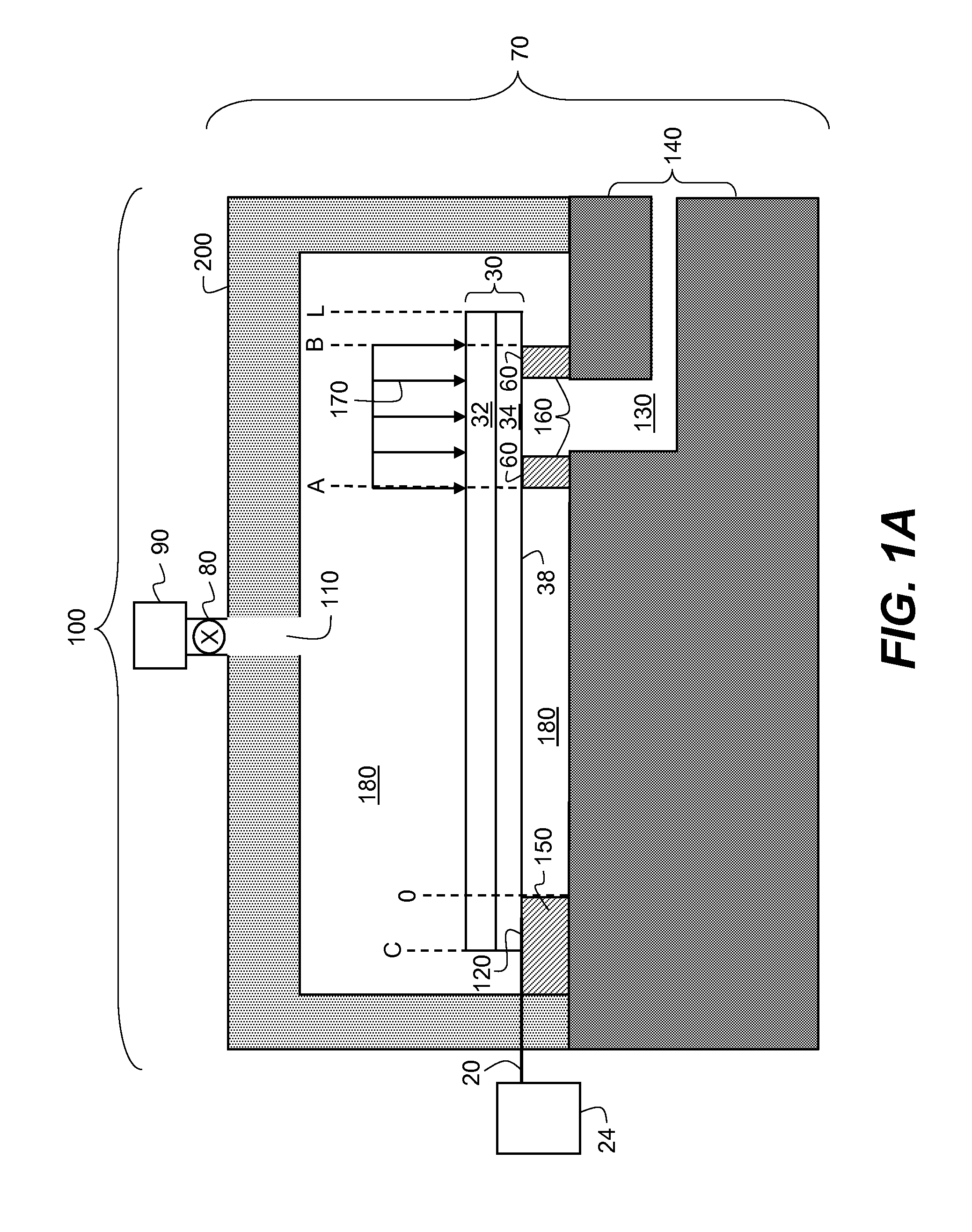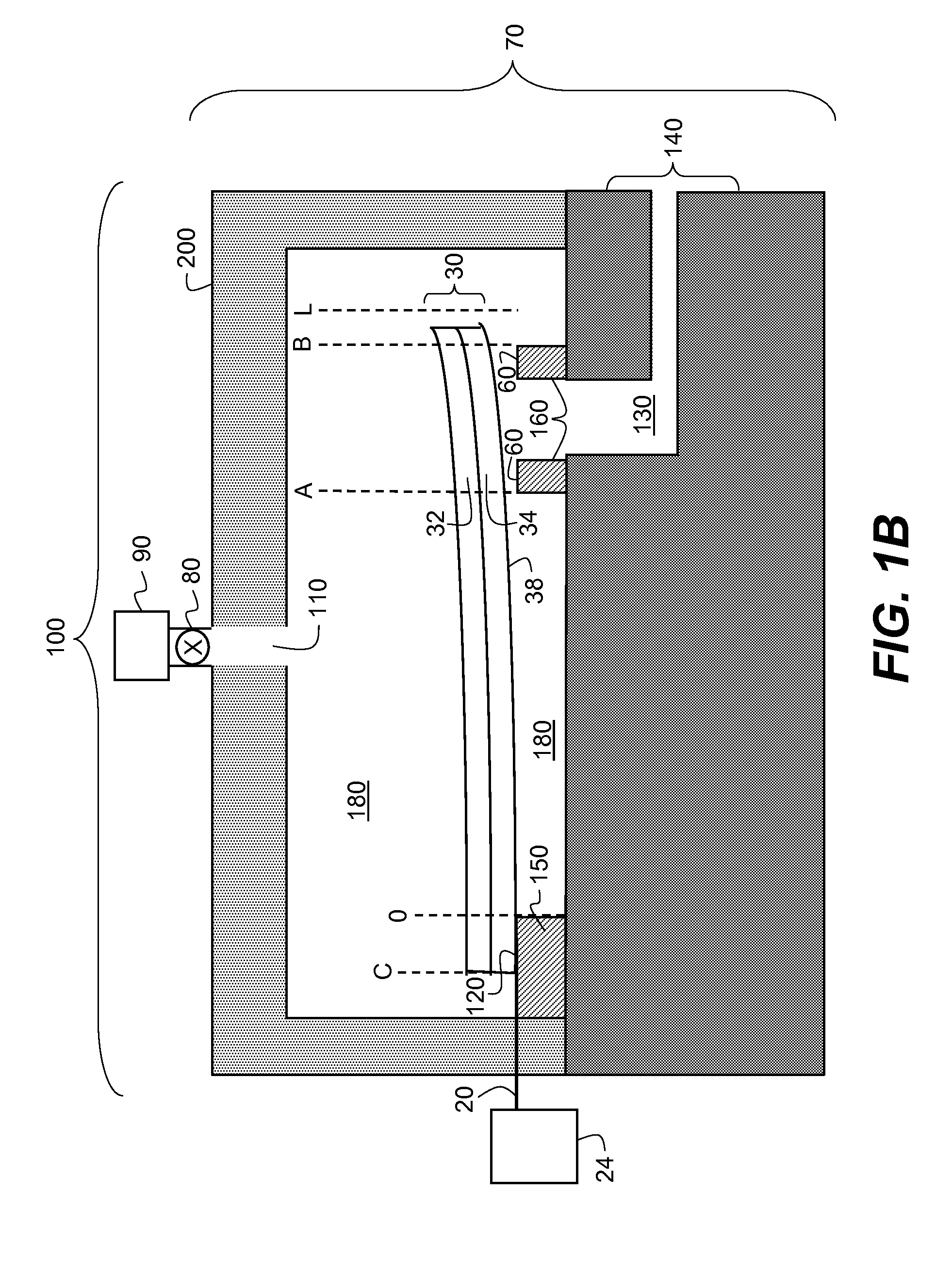Microvalve for control of compressed fluids
- Summary
- Abstract
- Description
- Claims
- Application Information
AI Technical Summary
Benefits of technology
Problems solved by technology
Method used
Image
Examples
example 1
[0068]The operation of a 200 μm long by 30 μm wide tri-layer thermo-mechanical micro-valve designed according to the teachings of this invention was mathematically modeled. The tri-layer valve had a 7 μm thick silicon nitride (Si3N4) layer sandwiched between two 7 μm thick aluminum layers. The part of the tri-layer valve in constant contact at the anchor was 20 μm long and it served as a heat sink. Also, the valve seat opening was 10 μm long by 20 μm wide and was located at 145 μm from the anchor. Initially, the valve was at 40 degree C. and 100 bar pressure in the high pressure chamber, forcing it in a closed position on the valve seat. Then a voltage pulse was applied to raise the temperature of the bottom aluminum layer 200 degree C. above the ambient (40 degree C.) in 1 μsec. The solid curve in FIG. 9 shows the calculated static deflection profile of the cantilever beam under these conditions. The pressure drop across the cantilever beam at the outlet port is calculated to be 46...
example 2
[0070]The operation of a 200 μm long by 30 μm wide bi-layer thermo-mechanical micro-valve designed according to the teachings of this invention was mathematically modeled. The bi-layer valve had 10 μm thick silicon nitride (Si3N4) top layer and a 10 μm thick aluminum bottom layer. The part of the bi-layer valve in constant contact at the anchor was 20 μm long and it served as a heat sink. Also, the valve seat was 10 μm long by 20 μm wide and was located at 110 μm from the anchor. Initially, the valve was at 40 degree C. and 150 bar pressure in the high pressure chamber, forcing it in a closed position on the valve seat. Then a voltage pulse was applied to raise the temperature of the bottom aluminum layer 200 degree C. above the ambient (40 degree C.) in 1 μsec. The solid curve in FIG. 11 shows the calculated static deflection profile of the cantilever beam under these conditions. The pressure drop across the cantilever beam at the outlet port is calculated to be 69 bar for the chok...
PUM
 Login to View More
Login to View More Abstract
Description
Claims
Application Information
 Login to View More
Login to View More - R&D
- Intellectual Property
- Life Sciences
- Materials
- Tech Scout
- Unparalleled Data Quality
- Higher Quality Content
- 60% Fewer Hallucinations
Browse by: Latest US Patents, China's latest patents, Technical Efficacy Thesaurus, Application Domain, Technology Topic, Popular Technical Reports.
© 2025 PatSnap. All rights reserved.Legal|Privacy policy|Modern Slavery Act Transparency Statement|Sitemap|About US| Contact US: help@patsnap.com



